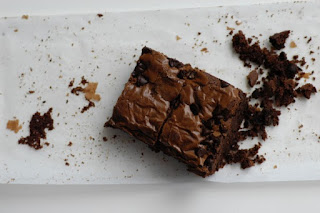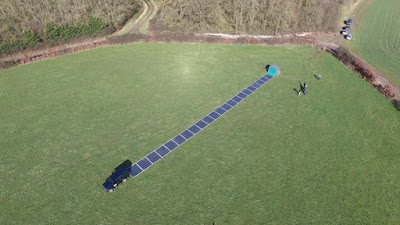It's all fun and games till you understand you messed up the measurements in your home marijuana edibles. While you immediately make calculations in mind and ponder whether that mistake will cost you 12 hours, you get ready for anything. This is one of the most common mistakes when cooking marijuana edibles. And of course, it is not the only one. Within this article we'll focus on the X most frequent mistakes when cooking cannabis edibles, also, more importantly. The way to avoid them!
Which Are Marijuana Edibles?
We already discussed all about cannabis edibles and their upcoming in preceding posts. Marijuana edibles are basically food or beverage products infused with cannabis extracts. They can contain CBD, THC or equally based on the sort of experience the consumer is trying to find. Anything from sodas, coffee, gummy bears, cookies, butter, as well as the famed pot brownies are considered marijuana edibles.
Cannabis edibles possess a different side impact than other ingestion procedures. Since they are absorbed through the digestive tract, the relaxing or psychoactive effect takes longer to kick in. But this means that it will additionally last longer compared to other methods such as inhaling or vaping. Also, edibles normally include larger doses than the usual normal joint or vape, meaning that you get one hell of a kick at a single tiny gummy bear.
Edibles are a part of the future of cannabis. However, as we mentioned before, it's very easy to make a mistake when cooking several types of edibles. And that is where the fun stops and the worries start.
11 Most Common Mistakes When Cooking Edibles
We'll start by enlisting the most frequent mistakes when cooking cannabis edibles... and how to avoid them for the next time you feel like baking a batch of brownies.
"If you want better tasting edibles, DO NOT FINELY GRIND THE MARIJUANA! What you're looking for the infusion, the plant's resinous trichomes, are ON the leaves and buds not IN them! All grinding accomplishes is to place more plant material to the finished product which in turn raises green colour and undesirable herbal flavors"
There's a little bit of an urban legend out there which you want to finely grind your marijuana in order to use it for edibles. But since the plant trichomes are on the buds and leaves, not in them, overgrinding just leaves you more"plant" substance and less trichome substance. And of course that your extract will turn green and herbal-flavored.
2. Making It Too Sexy
When you cook bud at a temperature that's too large, the THC element is broken down and degraded. Do your best not to utilize infused marijuana oils for sautéing or frying. When baking, guarantee that the cannabis focus is in the batter. You may cook it within the oven at 375ºF because the food itself doesn't get as hot as that.
3. Adding Too Much
"I have had the encounter with edibles, namely brownies, which once resulted in me carrying a 17-hour nap. My friends thought I had died. This did not falter my resolve, however, as I have consumed them a couple of more times, being careful with the dose." -- Snezhina Piskova, copywriter at Independent Fashion Bloggers
Also called overmedicating. One of the biggest mistakes when cooking and if consuming cannabis edibles is going too tough, too quickly. Adding too much marijuana to a particular edible is going to end badly, same as eating a lot of snacks prior to giving them the time to kick in.
4. Not Adding Enough
Same thing as before, only backward. If the batch you ready is too weak, you are able to do two things: consume another bit at least 45-60 minutes after swallowing the initial one. Or you can split some kief or hash into the mixture by heating it gently.
5. Not After The Recipe
Not following a cooking recipe can be a recipe for disaster. You can add salt rather than sugar, or find the cooking times wrong, or burn your prized edibles. All of that means something: it's going to have wasted. You have to be mindful of the portion sizes, the quantity of cannabis you need to add and how much time you have to cook it for.
6. Being Narrow-Minded
Gummies, brownies and baked products are not the sole item that may be cooked with cannabis! Matter of fact is, virtually anything could be infused with cannabis -- out of your morning java to a pesto pasta. Do not play small and open your mind to new recipes and adventures.
If you are cooking with the cannabis flower, you have to know 1 thing: raw cannabis has zero THC inside . So consuming any edible made with raw cannabis will have quite disappointing results. So before incorporating your cannabis to your own oil or batter, be sure to decarboxylate it by adding warmth. All you will need si to preheat your oven to 220-235ºF (is determined by oven model & potency), line a baking tray with parchment paper, and also add in your raw flower. Leave it in for a couple minutes (think 30-40) and take it out. Now your marijuana is activated and ready to be utilised in any type of dish!
8. You Need To Stir More
When cooking an edible, then be sure to stirfry, and then stir some more. Verify the cannabis supply is even so that every portion size has the same quantity of cannabis. And if you're not sure, stir .
9. Not Assessing Your Cannabutter
"An easy at-home approach to produce edibles is to begin with cannabutter. It is fairly easy to make and it's very easy to substitute for butter in any recipe. Unless you're sending your cannabutter for potency testing, there's no way to tell how powerful it is. Each single time you make cannabutter, the potency will be different. The very ideal thing to do would be to take a teaspoon of this cannabutter and eat it by itself. Wait up to two hours until you feel the consequences. From that point, you can do the math in your recipe and get a feeling for how powerful each serving will be. Err on the side of caution if you're starting out and create the servings less potent than you want. As they say,"You can always eat more, you will not ever be able to eat less." -- Heather Rodman, VP of Brands & Marketing at Growth Network
10. Getting Afraid Of Trial & Error
Lots of people quit after their initial batch of biscuits wasn't good enough. But like everything in life, the key is trial and error. Maybe your first cannabutter was too powerful, or too weak, or maybe too herby. The key here is to exercise and try again until you find the best way to make it! So don't be scared to fail -- it will only lead to delicious edibles, so there is no harm in attempting (and subsequently trying a few more!) .
11. Not Seasoning Enough
"So many individuals have bad experiences when cooking edibles because they don't add any seasoning or flavoring to their own recipe. Unless you want the flavor of grass, it's unlikely you will enjoy the flavor of the edible with this addition! You can add healthy spices such as cinammon or garlic to your own recipes to add a little excess flavor, plus you'll get additional health benefits." -- Sam Williamson, co-founder of all CBDiablo
Grilled chicken doesn't taste exactly the exact same manner if it's unseasoned. Same goes for almost any edible, cannabis or not. Do not be afraid to season off and take your dishes into the next level.







